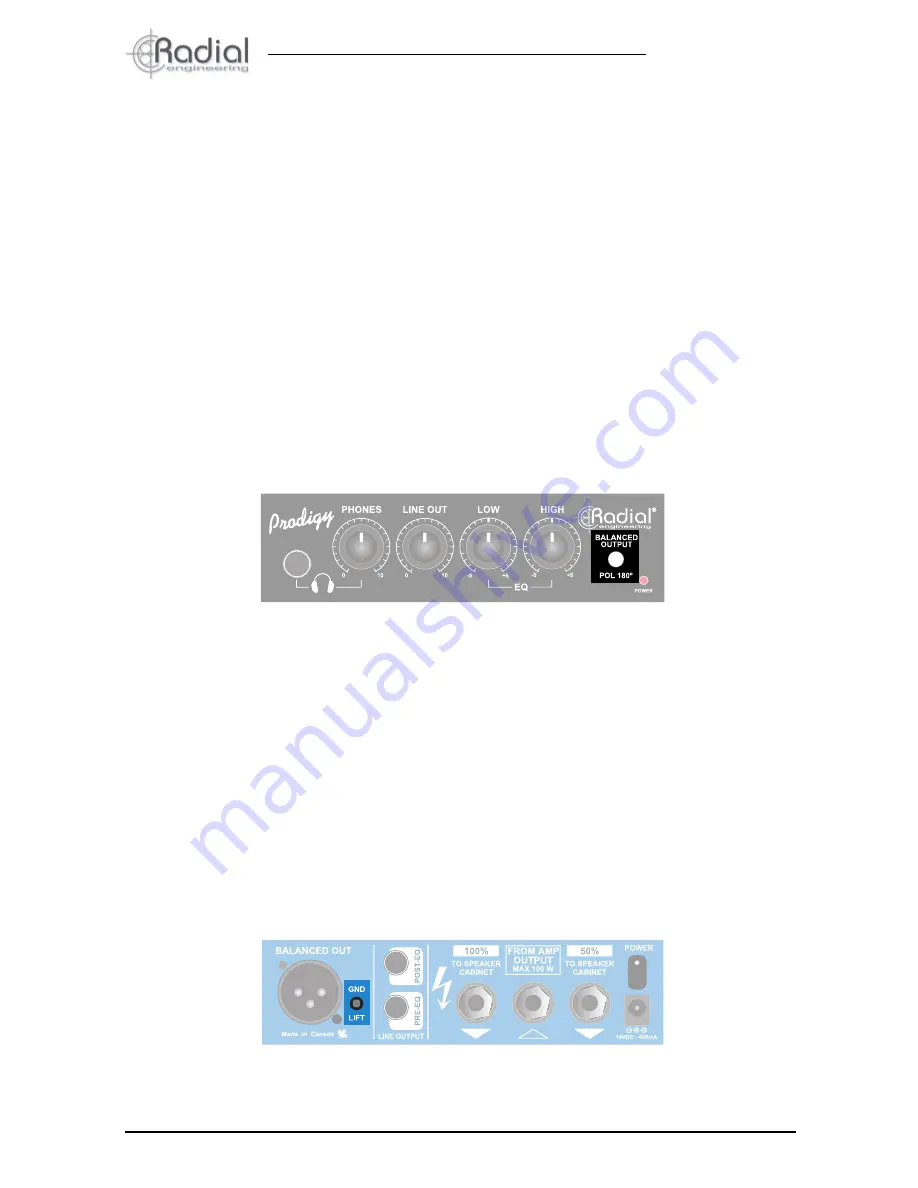
Radial Engineering Ltd.
Headload Prodigy™ Load Box
True to the Music
®
9
The 180º Polarity Reverse Switch
The Headload Prodigy’s JDX output is wired to the AES standard with pin-1 (ground), pin-2 (+),
and pin-3 (-). This follows convention with all pro audio gear made in recent years. But when
combining the JDX with older vintage gear, you may find that the input on your vintage processor
may have the polarity reversed. To address this, the Prodigy is equipped with a 180º polarity
reverse switch that toggles pin-2 and pin-3 at the XLR output, inverting the relative phase.
The polarity reverse function can also be used to compensate for ‘acoustic peaks and val
-
leys’ at certain spots on stage that can cause some frequencies to sound louder than others
due the interaction of the amp, monitors and PA. Switching the polarity can sometimes help
normalize the sound where you may be standing.
Finally, when recording, placing a mic in front of the cabinet and then further away will change
the tone depending on room acoustics and the effects of comb-filtering. Combining the mic'd
sound with the Prodigy’s JDX direct output can lead to great results. Try reversing the polarity
to improve the phase relationship between the two signals and then, for fun, try moving the
distant mic around. Simply find the setting that sounds best to your ears.
Using the Ground Lift
A common problem in both studios and live PA is the hum and buzz that seems to propagate
as soon as various pieces of audio devices are connected together. This problem is often
referred to as a ground loop. In general terms, when plugged in to the electrical system,
for safety, all of the devices share the same electrical ground. When an audio connection is
made, the audio ground creates a loop that allows noise from spurious DC currents and other
‘gremlins’ to pollute the audio signal.
To help eliminate the hum and buzz caused by ground loops, the Headload Prodigy is
equipped with a ground lift switch that lifts pin-1 on the XLR output. If you hear hum, push
the switch inward. The switch is recessed in order to prevent accidental use. To switch, use
a small screwdriver.


































